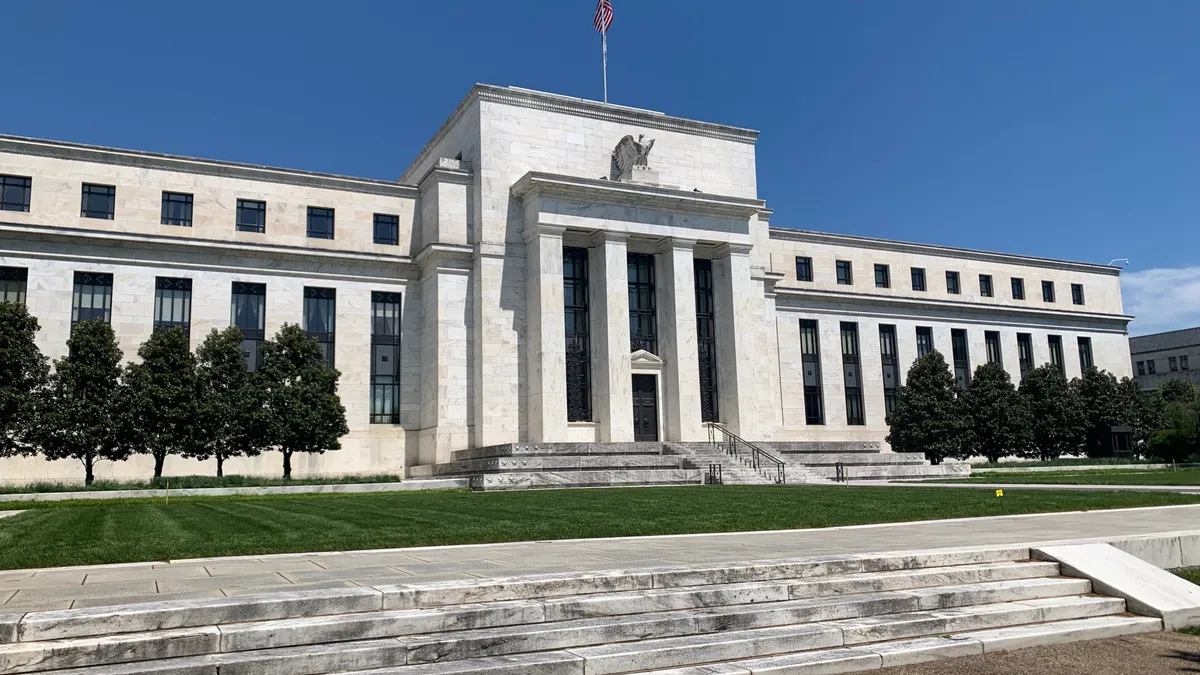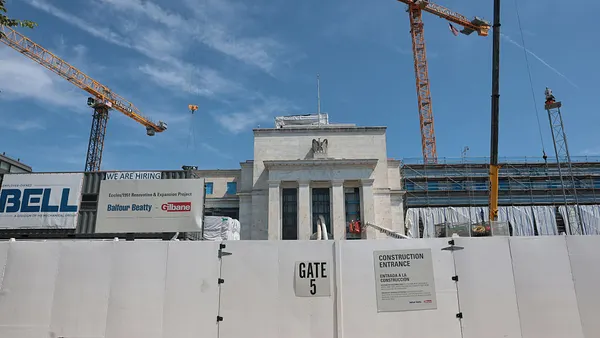Dive Brief:
-
The Federal Reserve ordered banks to suspend share buybacks and cap dividends for the third quarter of this year to preserve capital. The Fed said it will allow dividends according to a formula based on recent income. Banks will also be required to re-evaluate their longer-term capital plans.
-
The restrictions follow the release of the regulator's annual stress tests, which, for the first time included a "sensitivity analysis," measuring banks' resilience under three hypothetical recessions: V-shaped, U-shaped and W-shaped. Under the worst-case scenario, the country's largest banks would lose roughly $700 billion, the central bank said.
-
While most firms tested under the scenarios would remain well capitalized, a U-shaped or W-shaped recovery would cause several banks to approach minimum capital levels, the Fed said.
Dive Insight:
The Fed's order for banks to freeze share buybacks comes as the nation's largest banks have already pledged to halt the practice as early as mid-March.
The Fed on Thursday said it would cap dividend payments to the amount paid in the second quarter and would further limit them to an amount based on recent earnings.
Major banks have continued to pay dividends amid the coronavirus pandemic, prompting recent calls from lawmakers and Federal Reserve Gov. Lael Brainard to call for the payouts to be halted and not just capped during the quarter.
"I do not support giving the green light for large banks to deplete capital, which raises the risk they will need to tighten credit or rebuild capital during the recovery," Brainard wrote in a separate statement, following the Fed's release of the stress test results.
Brainard said she could not support a policy that "fails to learn a key lesson of the financial crisis."
Fed Vice Chair Randal Quarles, however, had a more optimistic view of the stress test results.
"The banking system has been a source of strength during this crisis," he said in a statement. "And the results of our sensitivity analyses show that our banks can remain strong in the face of even the harshest shocks."
Under the hypothetical downside scenarios, which included unemployment peaking at 19.5%, aggregate loan losses for the 34 banks ranged from $560 billion to $700 billion, and aggregate capital ratios declined from 12% in the fourth quarter of 2019 to between 9.5% and 7.7%, the Fed said.
The central bank's sensitivity analysis did not factor in the potential effects of coronavirus-related government support.
This year's test differs from previous ones. The coronavirus outbreak brought about a recession that eclipsed the Fed's original stress test scenario, which was published in February, before the pandemic began, prompting the regulator to develop its sensitivity analysis.
"We simply would not have been doing our jobs if we had just run the test using a scenario framed before the economy began to deteriorate," Quarles said at a virtual event with Women in Housing and Finance last week. "There's probably never been more uncertainty about the economic outlook."
The regulator also chose not to publish the sensitivity analysis data specific to each bank, but rather, aggregated the data and compared how the industry would respond to a downturn as a whole, a move several Democratic senators called "highly disconcerting."
"Transparency surrounding the results of the tests is a bedrock principle of the stress testing framework," Sens. Brian Schatz D-HI, Sherrod Brown, D-OH, and Elizabeth Warren, D-MA wrote in a letter to Fed Chair Jerome Powell on Tuesday. "This decision could undermine confidence in the banking system."














